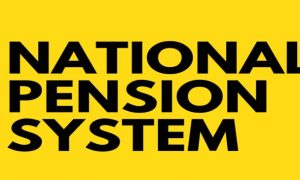SBI vs PNB FD Interest Rates: The minimum amount to invest in a SBI and PNB FD is Rs 1,000.
Fixed Deposits (FDs) remain a reliable choice for those seeking stability and guaranteed returns in the ever-changing financial landscape. Among India’s top banking options, the State Bank of India (SBI) and Punjab National Bank (PNB) are renowned for their wide reach and customer-centric services. This guide compares the interest rates for three-year FDs from both banks, helping you make an informed decision.
Whether you’re a risk-averse investor or a senior citizen aiming to maximise returns, understanding these options can play a key role in shaping your financial strategy.
When evaluating FDs with a 3-year tenure in SBI and PNB, it’s essential to compare key factors like the interest rates offered, minimum deposit requirements, and additional features such as penalties for premature withdrawal. These details can help you choose the option that best aligns with your financial goals and needs.
SBI And PNB FD Interest Rates (as of recent data)
Interest Rates on Retail Domestic Term Deposits (Below Rs 3 crore)
SBI FD Interest Rates 2024
For a 3-year maturity period FD, the State Bank of India offers a tenure of 3 to 5 years.
Interest Rate for 3 years to less than 5 years tenure FD
- For the general public- 6.75%
- For senior citizens- 7.25%
PNB FD Interest Rates 2024
Punjab National Bank has a different tenure period for a 3-year maturing FD.
Read More: NPS Death Claims: Steps to take in absence of a valid nomination
Interest Rates on Retail Domestic Term Deposits (Below Rs 3 crore)
> 2 years to 3 years FD Interest Rate
- General public- 7%
- Senior Citizens- 7.50%
- Super Senior Citizens- 7.80%
Minimum Amount For FD In SBI And PNB
The minimum amount to invest in a SBI and PNB FD is Rs 1,000.
Read More: Big change coming in gold loans? Soon, you may be able to repay in EMIs
Which Bank Offers Better Returns?
PNB provides slightly higher interest rates for both regular and senior citizens than SBI for a three-year FD. However, verifying the latest rates directly with the banks is crucial, as they can change based on policy updates. Additionally, evaluate your financial priorities—such as flexibility or additional features—to determine which bank’s FD aligns better with your needs.
Disclaimer: The views and investment tips by experts in this News18.com report are their own and not those of the website or its management. Readers are advised to check with certified experts before making any investment decisions.





































